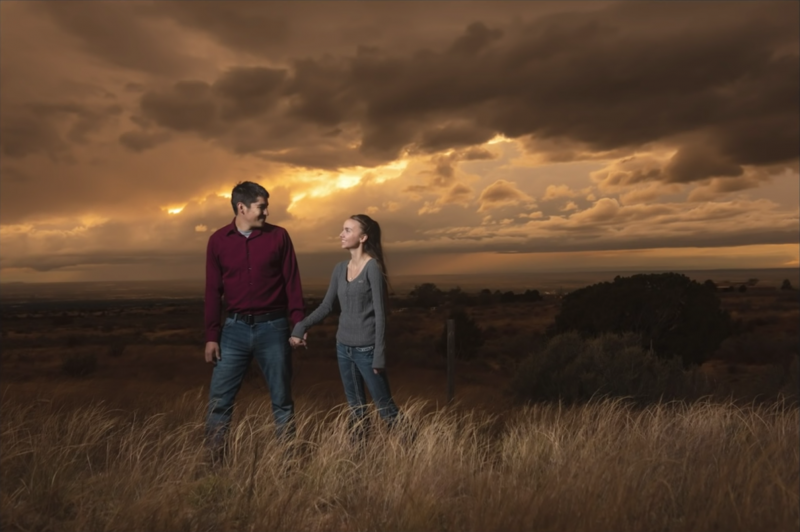
Color theory is usually placed on the back burner for aspiring photographers seeing as there is already so much to comprehend regarding exposure settings, gear, and lighting. A couple of decades ago, photography didn’t use to allow as much manipulation as current digital media and was more about capturing the real world. As technology has changed and new & exciting products have launched to help alter the look of a scene, photographers have been given a whole new standard to uphold.
With the MagBox making its way into the hands of portrait photographers, I thought it would be fun to show you a behind-the-scenes video of a recent shoot where I got to play with a couple of different colored gels and the latest softbox during sunset. These photos were taken within minutes of each other and all have vastly different looks – you can watch the full video here:
Gel #1: 1/2 Color Temperature Blue

You’ll see in the video that this was a dark and dreary day with storm clouds rolling in over the mountains behind the couple. For moments like this, I like to bring back some warmth (which would exist if there was natural sunlight) by warming up my in-camera white balance to 8,000-9,000K. In order to balance the color in the scene and ensure that their skintones aren’t too orange, I pulled out a 1/2 color temperature blue gel to place in my MagBox. The image above was created by adding just a bit of fill flash to bring the subjects out of the scene.
[REWIND: MagBox Review For Wedding Photographers]

To get a more dramatic look with an underexposed background to bring out the detail in the sky, I exposed for the storm clouds and added more flash power to chisel the couple out of the scene. I love how easy it is to have the power of two speedlights with the MagRing but still get a diffused look because of the MagBox Fabric Diffuser. I also switched from a 135mm to a 35mm lens to capture a wider scene.
Gel #2: 1/2 or Full Color Temperature Orange

On the complete opposite of blue on the color spectrum is orange which means that when we use a color temperature orange gel, we’ll need to adjust our in-camera white balance to 2900-3200K. For this shot, I was at around 3200K using a Full CTO gel. You can accomplish something similar if you wanted less blue but remember to use a 1/2 CTO gel in order to balance out the white balance with the color of the gel.
Gel #3: Green Correction Gel

The MagBox Pro Kit comes with 2 green correction gels, one that lighter and one that’s a bit more saturated. I wanted to test out just how far I could push these new products so I popped in the Plus Green gel and shifted my in-camera tint to magenta. While it is common to alter white balance in-camera, not many think to touch the tint shift settings. A quick glance back at our color wheel and you’ll find that green is on the opposite spectrum of pink.
You can see how easy it is to create drastically different results with three simple gels all within the same scene. If you are interested in purchasing the MagBox Pro Kit that comes with the gels mentioned in this article, click here.




Get Connected!